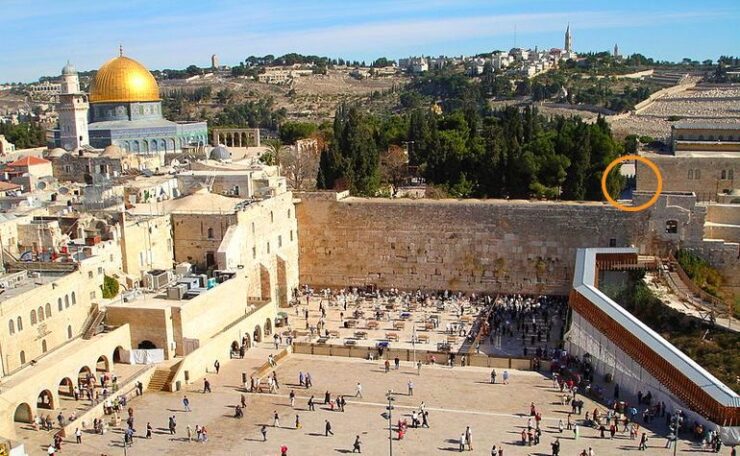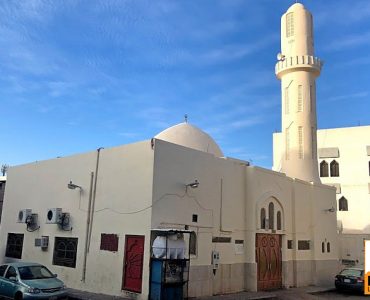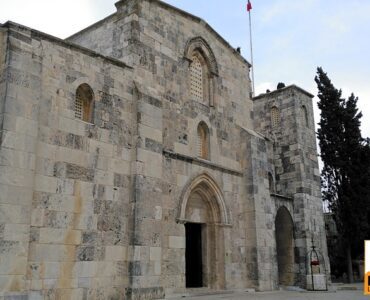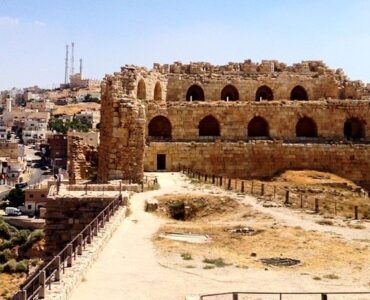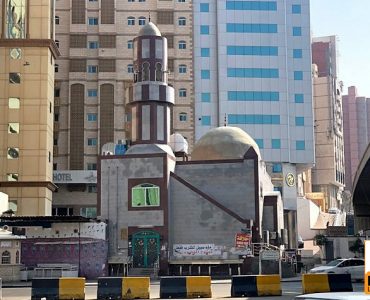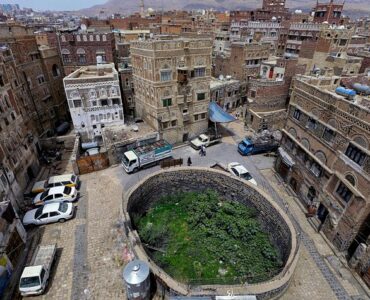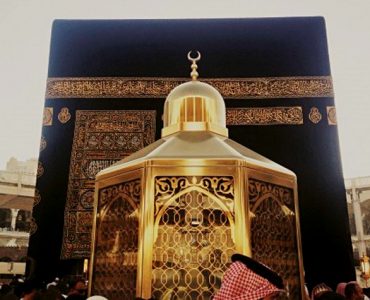This wall, formerly referred to as the ‘Wailing Wall’ and now more commonly known as the ‘Western Wall’ is the most sacred place for Jews who believe it to be the only surviving structure of the Herodian temple. For Muslims it is known as the Buraq Wall, for on the other side is where the Prophet Muhammed (ﷺ) tied the Buraq, the riding animal upon which he rode during the Night of Ascension (Mi’raj). The circle shows approximately where this happened.
- The area which the current plaza occupies used to be residential housing called the Maghribi (Moroccan) Quarter. It was endowed by Al-Afdal, the brother of Salahuddin Ayyubi so that aid and services could be provided for North African pilgrims and the poor; he also built a madrasah (seminary) where the fiqh (jurisprudence) of the Maliki school of thought could be taught and studied. During the Mamluk period, madaris (seminaries) had been built all along this wall, except for a stretch of about 22 meters between the Street of the Chain (Tariq al-Silsila) and the Maghribi Gate. This early photo shows the structures that used to exist in front of the wall, this included a mosque (circled) from the time of Salahuddin.
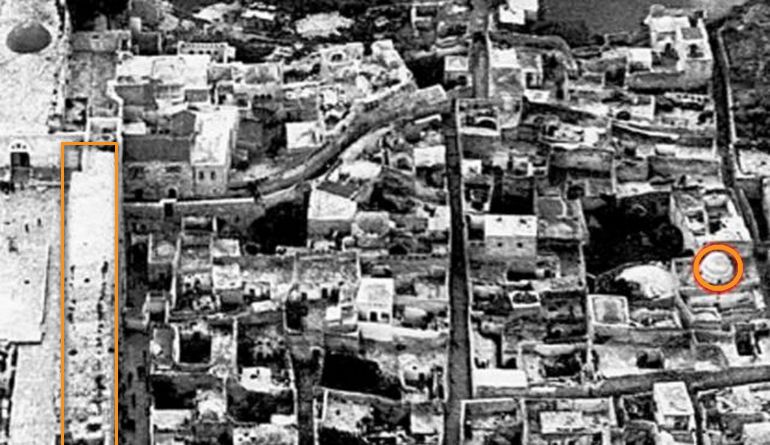

- The Jewish community had never previously shown any particular interest in this portion of the wall. Though they consider it to be the only surviving remnant of the Second Temple, the Wall was never actually part of the Temple as such, but rather the western wall of a retaining structure built under Herod the Great to support the plaza above. In Herod’s day, the place had been a part of a shopping centre and had no religious significance.
- The wall consists of 45 stone courses, 28 of them above ground and 17 underground. The first seven visible layers are from the Herodian period. The next four courses, consisting of smaller plainly dressed stones, date from the Muslim Umayyad period (8th century). Above that are 17 courses of small stones from the Muslim Mamluk period (13–16th century).
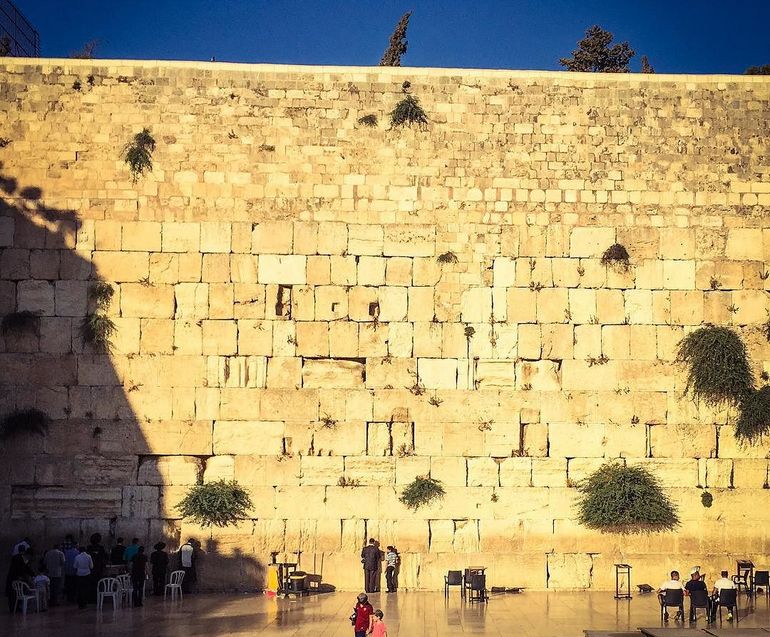

- There are huge stones which make up the portion below the ground level. One particular stone (referred to as the Western Stone) ranks as one of the heaviest objects ever lifted by human beings without powered machinery. The stone has a length of 13.6 meters and an estimated width of between 3.5 and 4.5 meters. It is estimated to weigh 570 tons.
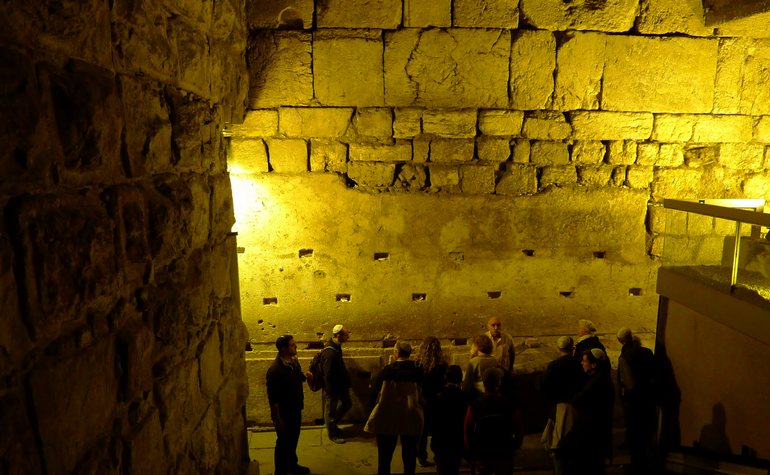

- The Romans destroyed Herod’s Temple after the Jewish War in 70 CE and the few Jews that remained in the city after the war were banished from the region. Only the western wall of the Temple’s inner sanctum was left standing, but over the centuries that followed, Jewish pilgrims in Jerusalem gathered for prayer on Temple Mount where possible, or on the Mount of Olives when not. The Western Wall became a permanent feature in Jewish tradition in around 1520 as the idea spread that Jewish people should not enter the Temple sanctuary itself because they were no longer able to attain the necessary degree of ritual purity. Jews began instead to gather in front of this wall to pray, and gradually traditions which had been associated with the western wall of the Temple’s inner sanctum transferred themselves to this wall.
- The old city was given its definitive shape in the 16th century by Sulayman the Magnificent, who built the present day massive stone walls of the old city in 1537. It is said that he had a dream in which the Prophet Muhammed (ﷺ) commanded him to organise the defence of Jerusalem.
- During the construction of the city wall, Sulayman issued an official edict permitting the Jews to have a place of prayer at the Western Wall. The famous Turkish architect Koca Sinan (who designed the Suleymaniye Mosque in Istanbul) is said to have designed the site, excavating downward to give the wall added height and building a wall parallel to it to separate it from the Maghribi Quarter, creating an alley about 3.5 metres wide (see photo below). In Jewish legend Sulayman was said to have helped clear the site himself and to have washed the wall with rose water to purify it, as Umar (رضي الله عنه) and Salahuddin had done when they reconsecrated the Sanctuary. The Jews had previously used the Mount of Olives as their main site of public celebration.


- Under the terms of the Status Quo on holy sites, a decree fixed by decree of the Ottoman Sultan in 1757 and codified in more detail by a British government Commission in 1922, the Wall is technically Muslim property, belonging to the Waqf, who also own the synagogue area in front of it. Jews however, have the right to stand on the pavement in front of it and pray.
- One of the first acts of the Israelis, upon taking over East Jerusalem during the 1967 war was to give the 619 Palestinian inhabitants of the Maghribi Quarter just a few hours to evacuate their homes. Then the bulldozers came in and destroyed this historic district. This act, in contravention of the Geneva Convention was done in order to create a plaza big enough to accommodate the thousands of pilgrims who were expected to flock to the Western Wall.
- Only 57m of the wall is visible from outside, the total length is actually 488m. This video shows the Wilson’s Arch section, the covered part on the left of the plaza.
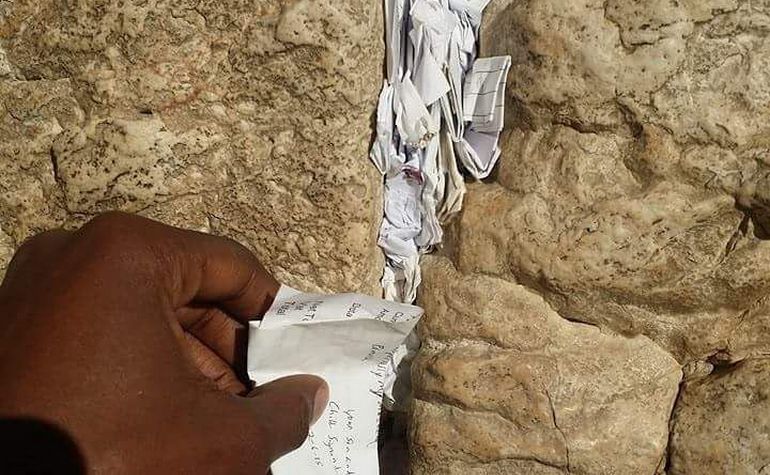

- Prior to the Israeli takeover of the wall in 1967 there existed this street sign on the wall:
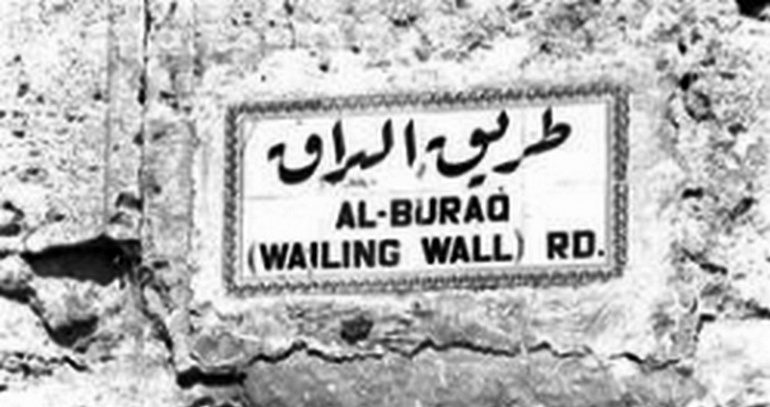

References: Al-Quds – Mohammed Abdul Hameed Al-Khateeb, A history of Jerusalem – Karen Armstrong, Western Wall – Ben Dov, The Rough Guide to Jerusalem, HUMA’S travel guide to Palestine, HiddenIncaTours.com.

